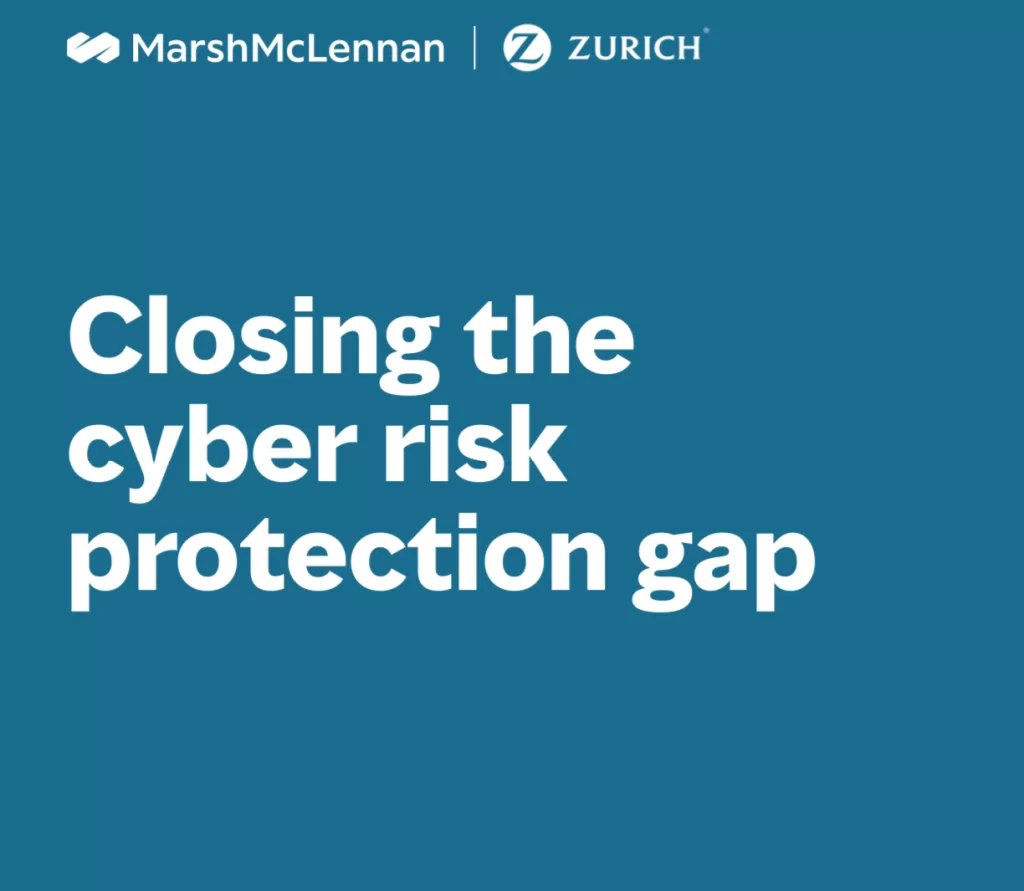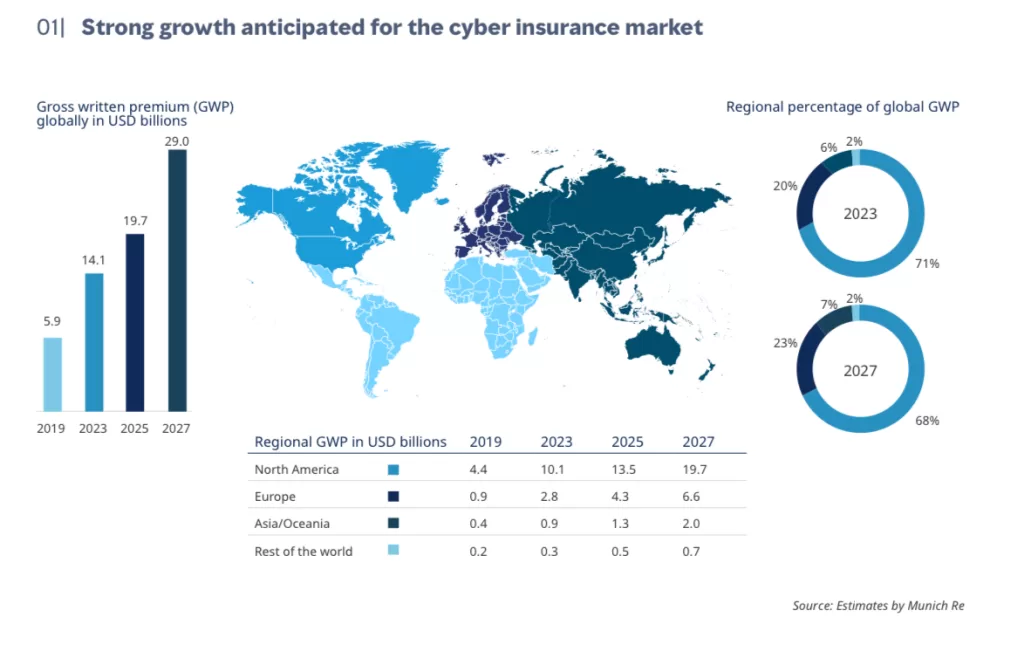Throughout history, governments and private sectors have joined forces to manage threats that surpass the capacity of either to handle alone. From pooling resources to address nuclear risks under the U.S. Price-Anderson Act of 1957, to the establishment of the National Flood Insurance Program in 1968, and the Terrorism Risk Insurance Act following the September 11 attacks, public-private partnerships have proven essential in mitigating high-risk scenarios. In the face of rising cyber threats, Marsh McLennan and Zurich Insurance Group are calling for a similar collaborative approach to bridge the growing cyber protection gap and enhance societal resilience.
A newly released whitepaper from Marsh McLennan, a leader in risk management, and Zurich Insurance Group, a global provider of resilience services, urges governments and the private sector to work together to address the increasing risks posed by cyber threats, particularly for small and medium-sized businesses (SMBs) that often remain uninsured or underinsured. Titled Closing the Cyber Risk Protection Gap, the paper highlights the urgent need for innovative approaches to mitigate these evolving risks.
What follows is our takeaway; you can read the full report here.

Growing Threat of Cyber Attacks
Cyber threats, including ransomware and mass cloud outages, have outpaced traditional insurance and risk management solutions. According to the whitepaper, mass malware and cloud outages are still considered insurable up to a certain level of financial loss. However, critical infrastructure failures, such as power outages or financial market disruptions, are generally deemed uninsurable due to their potential to cause catastrophic damage.
The report highlights alarming statistics: the global cost of cybercrime is expected to surge to nearly $24 trillion by 2027, up from $8.5 trillion in 2022. Furthermore, ransomware payments reached a record $1.1 billion in 2023, driven by increasingly sophisticated attack methods, including generative artificial intelligence (AI). As John Doyle, President and CEO of Marsh McLennan, puts it, “The severe threat presented by cyber risks requires collective action to bridge the protection gap.”
A Call for Innovative Solutions
The whitepaper emphasizes the need for innovative solutions and stronger public-private partnerships to close the cyber risk protection gap. It suggests establishing a common framework for data sharing, fostering greater collaboration between the insurance industry and the public sector, and encouraging the development of innovative insurance products to tackle insurable and uninsurable cyber events.
Mario Greco, CEO of Zurich Insurance Group, reinforces this need for collaboration: “Large-scale, catastrophic cyber events present substantial accumulation risks that cannot be borne by the private sector alone. Therefore, enhancing cyber resilience is vital to addressing this protection gap.”
To achieve this, the report proposes creating robust incentives as an alternative to further regulation. These incentives could include methods to measure and manage both quantifiable and unquantifiable cyber risks through public-private partnerships. The aim is to sustain the broader economy and create capacity for the insurance market to support society against severe financial risks.
The Role of Public-Private Partnerships
The whitepaper identifies several key areas where public-private partnerships could make a significant impact:
Strengthening Cyber Resilience: Raising awareness and educating organizations about cyber risks, offering subsidies for cybersecurity investments, and sharing structured data. Cyber resilience can reduce pressure around catastrophic risk issues, enabling economies to better withstand and recover from cyber incidents.
Addressing Quantifiable Catastrophic Cybersecurity Risk: While some catastrophic cyber risks can be quantified and insured, events surpassing a certain financial threshold may exceed the capacity of the traditional insurance market. The report suggests that a public-private partnership could help manage these scenarios by pooling resources and expertise.
Managing Unquantifiable Cyber Risk: For risks deemed uninsurable due to their unpredictable nature, such as state-sponsored cyberattacks or critical infrastructure failures, the report calls for collaboration between governments and insurers to create new risk management frameworks.
Real-World Examples and International Efforts
The report points to existing models of public-private collaboration, such as the Cybersecurity Insurance and Data Analysis Working Group (CIDAWG) in the United States, which aims to understand effective security controls and improve data sharing between insurers and government entities. In the UK, recent government papers have highlighted the need to prioritize ransomware as a political issue. At the same time, the European Union’s Digital Operational Resilience Act mandates robust ICT risk management processes.
The paper also compares the need for a public-private approach in cyber risk management to other high-risk domains where government intervention has been crucial. For example, the U.S. government’s Price-Anderson Act covers liability claims from nuclear power plant accidents, and the National Flood Insurance Program provides affordable flood insurance by improving insurers’ reinsurance options.

Creating a Framework for Cyber Resilience
The whitepaper proposes a comprehensive cybersecurity framework involving the private sector and governments to address these challenges. This framework would focus on enhancing cyber resilience, ensuring widespread accessibility and affordability, and leveraging insurers’ risk management and distribution expertise. Additionally, it would aim to maintain risk-oriented pricing to avoid misaligned incentives.
The report emphasizes the importance of overcoming existing obstacles to data sharing, including legal constraints and the lack of standardized incident terminology. Effective collaboration between the public and private sectors could help close these gaps, ensuring a more resilient response to future cyber threats.
A Call to Action
Marsh McLennan and Zurich Insurance Group’s whitepaper serves as a wake-up call for policymakers and industry leaders. As cyber threats continue to escalate, it is clear that traditional risk management approaches are no longer sufficient. The hope is that greater collaboration and innovation will only close the cyber risk protection gap and safeguard society against potentially catastrophic cyber events.
Both organizations urge stakeholders to act now, fostering partnerships to enhance cybersecurity maturity and resilience. The whitepaper presents a critical roadmap for addressing the growing cyber threat landscape and ensuring a secure digital future for businesses and economies worldwide.
Source: Closing the cyber risk protection gap.
Other News: FBI Issues Urgent Ransomware Attack Warning—Do These 3 Things Now.